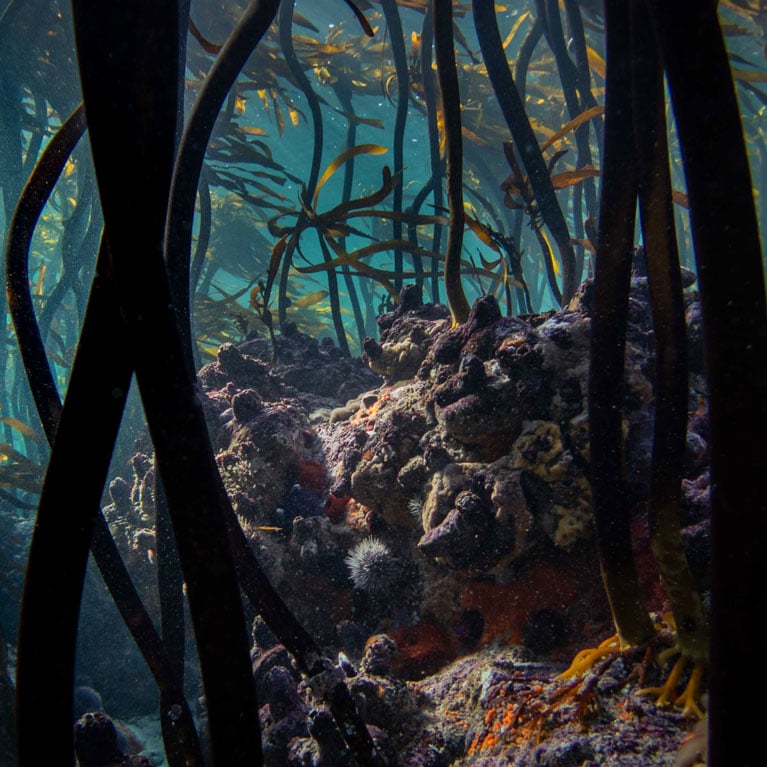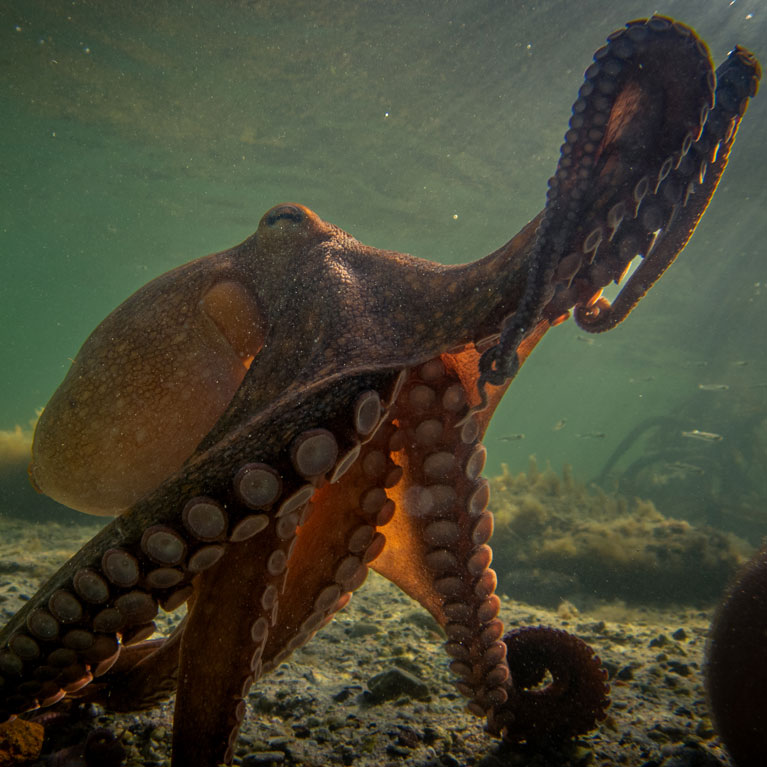1001 Seaforest Species
Craig and Jannes are diving into the Great African Seaforest in South Africa to bring to shore 1001 stories of the species that live there. Combining marine biological research with the art of underwater tracking, nature documentary-making and storytelling, the pair from the Sea Change Project hope to build a biodiversity dataset from the region that will grow and ultimately nurture a new appreciation for the fragility and wonder of nature.
My deep passion is tracking underwater on the coast of southern Africa. Tracking enables me to get inside nature and see animals and plants in ways that inspire further scientific exploration and storytelling. I am trained as a storyteller and filmmaker, but much of my teaching comes from the animals themselves and spending every day for many years in the water watching them. My other great passion is human origins and understanding what life was like in the Middle Stone Age in southern Africa. This led me to begin diving without a wetsuit so that I could understand what it meant...
I am a marine biologist, trained crustacean specialist, ecologist, and a naturalist of many kinds. My biggest passion has always been the ocean. Born as the son of a biologist I spent my childhood exploring the fields and marshes of northern Germany looking for insects, frogs or birds, or spending my holidays with my dad kayaking and fishing on the Scandinavian lakes. I had my most influential time after high school volunteering in nature conservation, when I stayed for two years on a Wadden Sea Island in the North Sea. Here I lived extremely closely to nature and amongst a...











1001 Seaforest Species
To connect people, through ‘1001 Seaforest Species’, to the Great African Seaforest by means of science-informed storytelling that creates an awareness of oceans around the world.
Biodiversity is the immune system of our planet. Our Octopus Teacher showed us that wild nature is the most important gift we have. If we knew what it would be like to live in a world of abundant wildlife, we would do everything to make that dream come true. The challenges we face as humans are enormous. We will tell stories that inspire us to take on the positive change that is so desperately needed.
‘1001 Seaforest Species’ is inspired by the ancient eastern tale, 1001 Arabian Nights. This tells the story of a king who, enraged by his wife’s infidelity, begins to execute virgins each morning after marrying them, until a clever girl begins to tell the king a captivating story that always ends in a cliff-hanger. Continuing the stories keeps her alive for 1001 nights, slowly softening the heart of the king until she is eventually pardoned.
This ancient story acts as a model for ‘1001 Seaforest Species’. As humans, we have desecrated the natural world, killing parts of it every day for centuries. With this project we set out to dive deep into nature to chronicle the stories she tells us, so that people around the world can fall in love with Mother Nature again, treat her with the gentleness she deserves and give her the pardon she needs to regenerate the biosphere upon which all life depends.
The goal of this ambitious project is to create a unique set of data, documenting 1001 species in our ‘sea change way’. By playing to our strengths, we aim to combine marine biology research with underwater tracking and nature documentation. This opens a window into the remarkable lives of these species, with the overarching narrative of the Great African Seaforest as a place of biological abundance and nature restoration. Over time the dataset will become a seed bank from which nature stories continually grow and develop. We will then nurture these fragile seedlings that will gradually cause human hearts to soften towards nature and thus ultimately keep nature alive.
· To scientifically document 1001 species that live in and around the Great African Seaforest and to chronicle each of their stories scientifically, using the same Sea Change principles of underwater tracking that informed the Oscar-winning film My Octopus Teacher.


